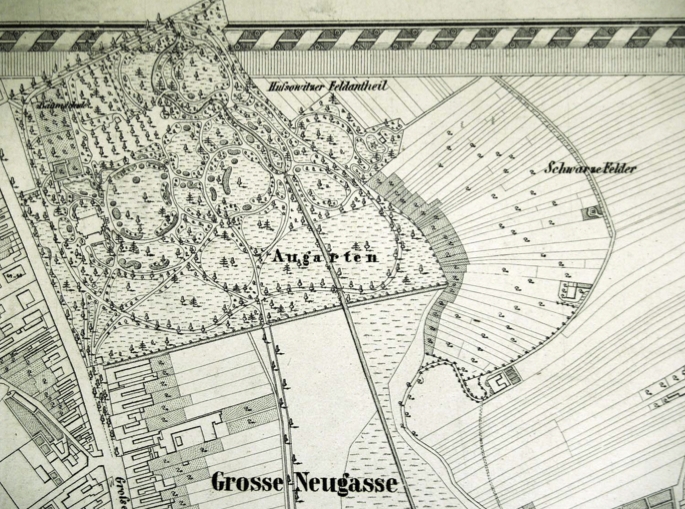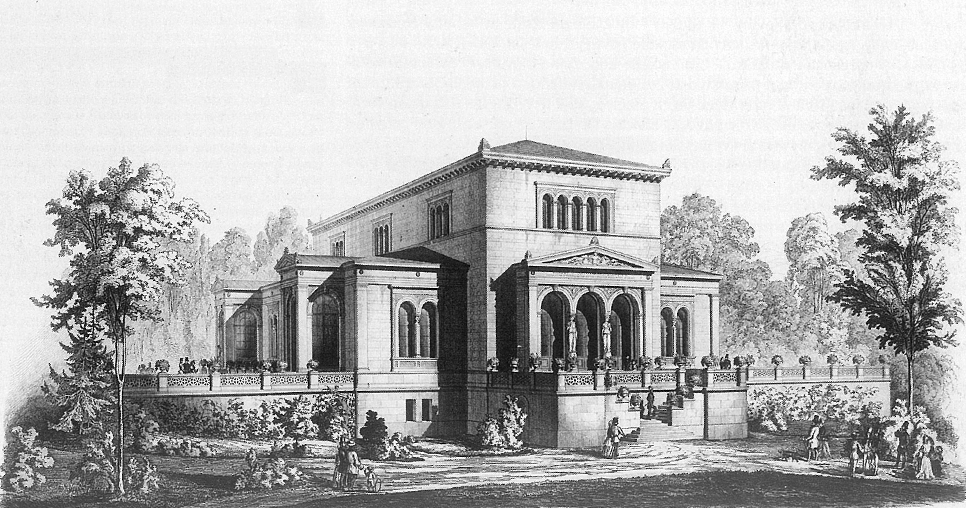Joseph II, the Holy Roman Emperor, established Augarten (Lužánky), the first public park in the Czech Lands in Brno. The park originally reached all the way to the slopes of Černá Pole. The elongated ridge above the park, known as Belvedere, was part of it up until the second half of the 19th century with the public greenery seamlessly turning into private gardens. The oldest city planning of the Brno residential district known as Černá Pole (Schwarzfeld) came about in this area after the year 1860; this also being the location of Villa Tugendhat built later in 1929–1930 for Grete and Fritz Tugendhat.
The main architectural feature of the Augarten (Lužánky) was the Casino building by the Viennese architect Ludwig Förster (1853–55). A fountain with a group of putti by the sculptor Franz Melnitzký, who cooperated here in Brno with the young stonemason Adolf Loos, the father of the famous architect, was installed in front of the Casino in 1860. The current appearance of the natural landscaped park came into being over the 1850s–1860s.


